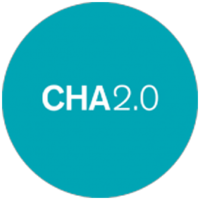CHATTANOOGA

random or planned acts of goodwill, compassion or charity delivered by regular citizens or employees of organizations whose missions are to help people get a leg up. Chattanoogans are known for their loving kindness and commitment to transforming the individual lives of their community’s residents. Sarah Morgan, president of the Benwood Foundation, a founding partner of Chattanooga 2.0, the city’s cradle- to-career community partnership, has seen it too: “Chattanooga is a very generous community,” she says. “People are willing to give sacrificially to help others.”
says Edna Varner. She’s been waiting a long time for Brown v. Board of Education, the 1954 U.S. Supreme Court ruling that racial segregation of children in public schools is unconstitutional, to deliver on its promise. Varner works for PEF, helping it improve teacher preparation and diversify the teaching ranks through its residency program. Retired after decades as a teacher and high school principal in Chattanooga,Varner started kindergarten in the city in 1955, the year after the Supreme Court’s decision.
Chattanooga 2.0 was built on a commitment to advancing equity and school turnaround work that long pre-dated our launch. And there are other equity efforts that are adjacent and complementary to the work the coalition does. What we did was pull together a broader set of stakeholders we feel are uniquely positioned to lead equity-focused work on the education to workforce continuum.
says Blankenship. Representatives from partner organizations report that sometimes there’s a price to pay for speaking out against racism and for equity in Hamilton County, where some feel free to express racist ideologies or others place a premium on avoiding the discomfort that frank discussions of racial injustice creates. “It’s easier to prefer harmony over progress and change,” Blankenship says.
As president of Chattanooga State Community College, she believes colleges should stop worrying about whether students are “college ready” and focus instead on becoming “student ready,” noting that institutions of higher education have been complaining about the preparation of their students since they were founded in the 17th century in what became the United States. “It’s always someone else’s fault,” she says. “That’s why collective impact efforts are important. K-12, higher education and nonprofits should all be in this together.”
that allow a backbone organization coordinating a collective impact initiative to step into places that others can’t and quarterback responses across organizations to issues,” Blankenship says of the partnership’s role in responding to the outbreak of COVID-19 and the school closures that ensued. “I’ve realized how important informal authority is. We’ve utilized collaborative infrastructure to bring people together in a time of real crisis.
A community cannot address inequities, partners say, unless there’s consistent agreement that they exist. Still, 2.0’s partners see there’s been a lot of progress in the hearts and minds of white Chattanoogans since the days of Jim Crow. “It’s not like it was in the days of segregation,” says Edna Varner of PEF. “White parents don’t mind anymore if their children are sitting next to Black students in school like they once did. They care that they are getting what people of privilege demand: rigorous curriculum with lots of options.
Read the Full
Chattanooga Story

